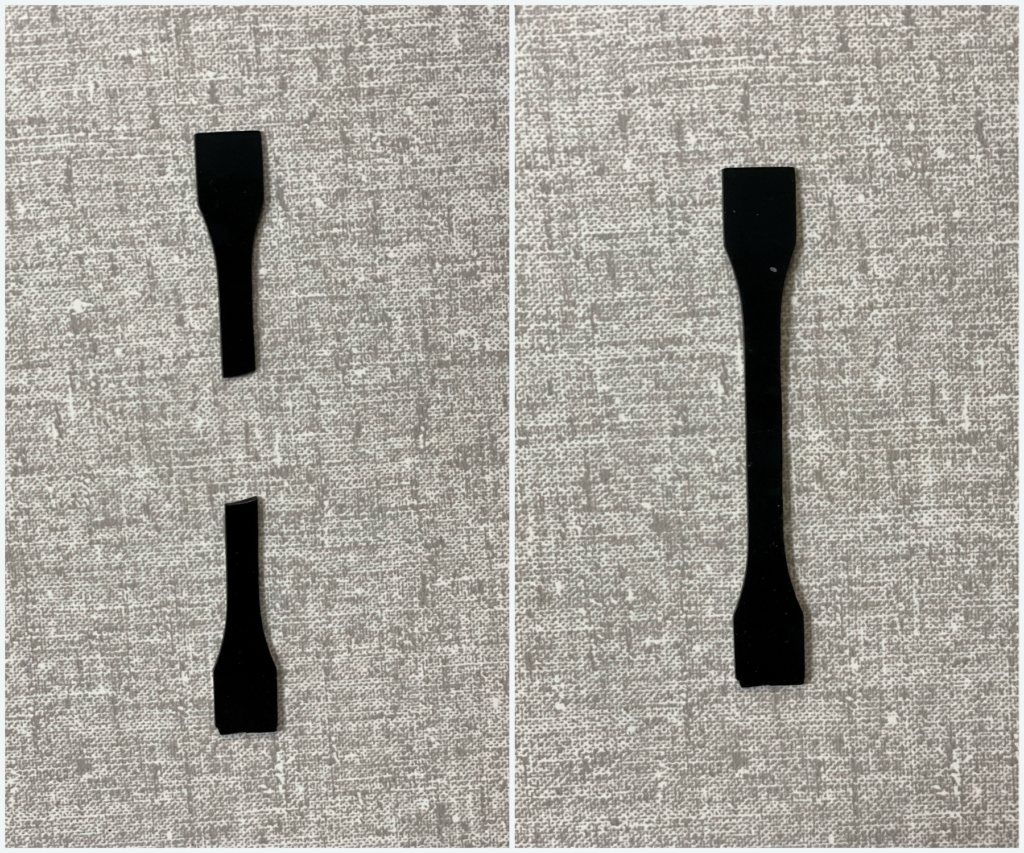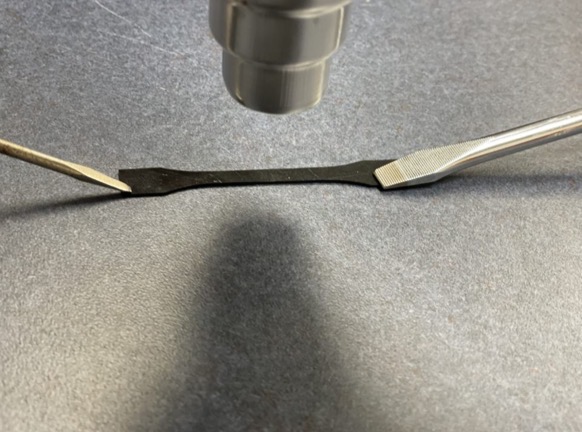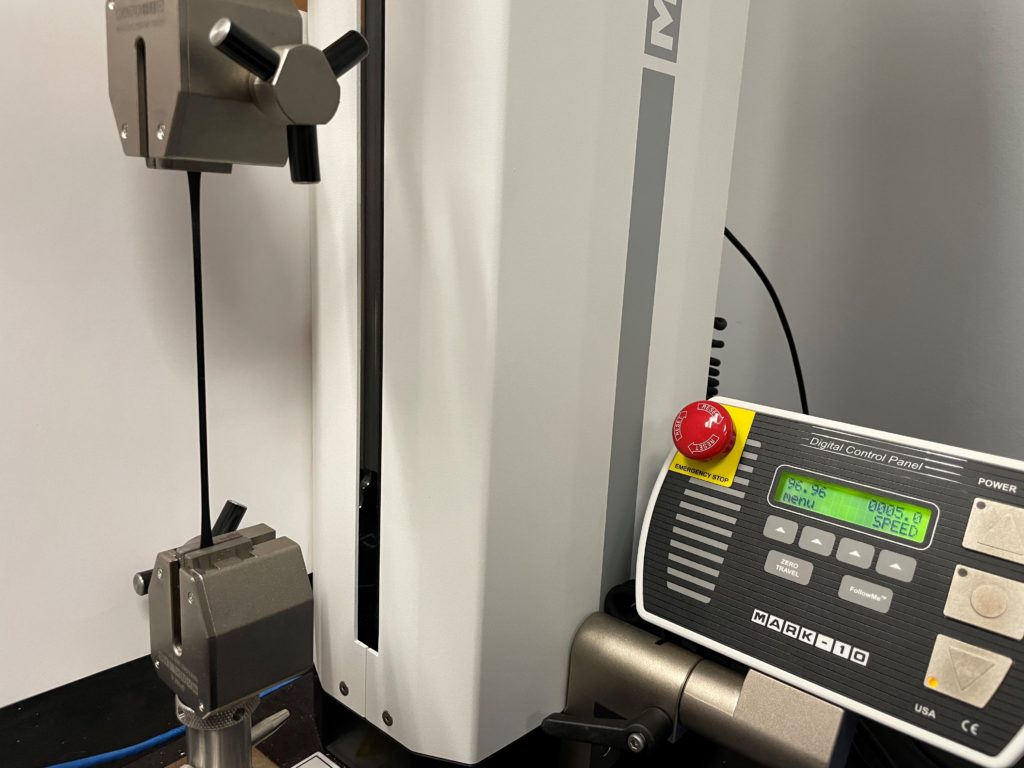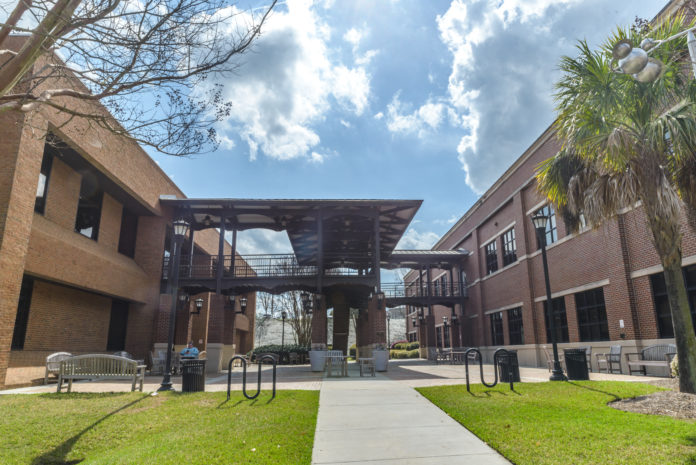A discovery by a Mercer research team could have great potential for the aerospace industry in the future. Mechanical engineering professor Dr. Alireza Sarvestani and a team of students have designed a novel polymeric material that can withstand extreme weathering conditions and is capable of self-healing.
Polymers are materials formed by large molecules. Dr. Sarvestani said his experimental studies for this project began two years ago with a grant from an out-of-state laboratory that specializes in the study of thermoplastic polyurethane, which is a rubber-like polymer with high resilience and long durability. He conducted research on site there the past two summers, and the lab continues to support his work.

Darren Pickren, now a Mercer alumnus, focused his master’s thesis on the project during the 2020-21 academic year, and recent graduate Gabriel Brito and students Daniel Krashin and Cass Conrad picked up where he left off for the 2021-22 year.
During the past year, Dr. Sarvestani and his team did extensive testing and data analysis on thermoplastic polymers, which melt at increased temperatures and solidify upon cooling. They reinforced the polymers with various fillers, with the goal of creating unique properties that would improve the material, said Krashin, a rising senior majoring in electrical engineering.
They prepared numerous samples and then put them to test by stretching, cutting and heating them, Krashin said. They also put some of the samples through an accelerated weathering machine prior to running those tests, Conrad said. A month before the end of the spring semester, they found success when one particular sample demonstrated self-healing and weather-resistant capabilities, Krashin said.
“We prepared a film of the material, and broke it into two parts. We increased the temperature, and at 60 or 70 Celsius, it actually started healing,” Dr. Sarvestani said. “Now we have a material whose property is almost exactly the same as before melting. By increasing the temperature locally, you can heal all the damage done. The other interesting property is it’s a very resistant material against UV (ultraviolet) radiation.”

The material weakened only slightly after healing and still proved to be quite strong after undergoing the same force tests, Krashin said.
“It was just like magic. It rehealed, and the material was strong, almost just like before. The findings were just amazing,” Krashin said. “It was a very big discovery.”
Dr. Sarvestani said the material is ideal for coating purposes, especially for aerospace vehicles and watercraft. For instance, pieces of an airplane could potentially be coated in the material to protect it from damage from debris in the air and UV exposure. The material could be used on ships to prevent water corrosion. And if damage or abrasion did occur, the material could be repaired by increasing the temperature.

Dr. Sarvestani plans to submit the research findings for publication in high-impact journals this summer and then apply for research grants. Next up, his team will conduct further testing and begin to look at ways to improve other properties of the material. He hopes to eventually partner with researchers from other fields, such as chemistry, to take the research further and make the project more sustainable long term.
As an electrical engineering major, Krashin said his knowledge of mechanical properties was limited when he first got involved with the project. He spent a lot of time in the beginning learning and listening, and his responsibilities increased throughout the year as he became more familiar with the concepts. But coming to the project from a different side of engineering did have its advantages, like leaving him more open minded to the possibilities.
He’s excited to be able to apply his electrical engineering skills in the next phase of the project, which will include testing the material on a larger scale and trying to make the polymer conductive by mixing it with materials like silver or gold.
“We tell our students, research takes consistency, time and effort in order to become something meaningful,” Dr. Sarvestani said. “These three students, we went through a lot together. We got all the results we wanted during this semester.”
Conrad, a senior mechanical engineering major, had done environmental research at Mercer before, but this project was her first time doing material science research.
“This has really helped my understanding of materials in general,” Conrad said. “There’s a lot that mechanical engineers do as far as material science is concerned, and a lot of it is really abstract. This has helped me apply it in a real-world way. Lab experience is good experience. I’ve had a lot of fun.”










